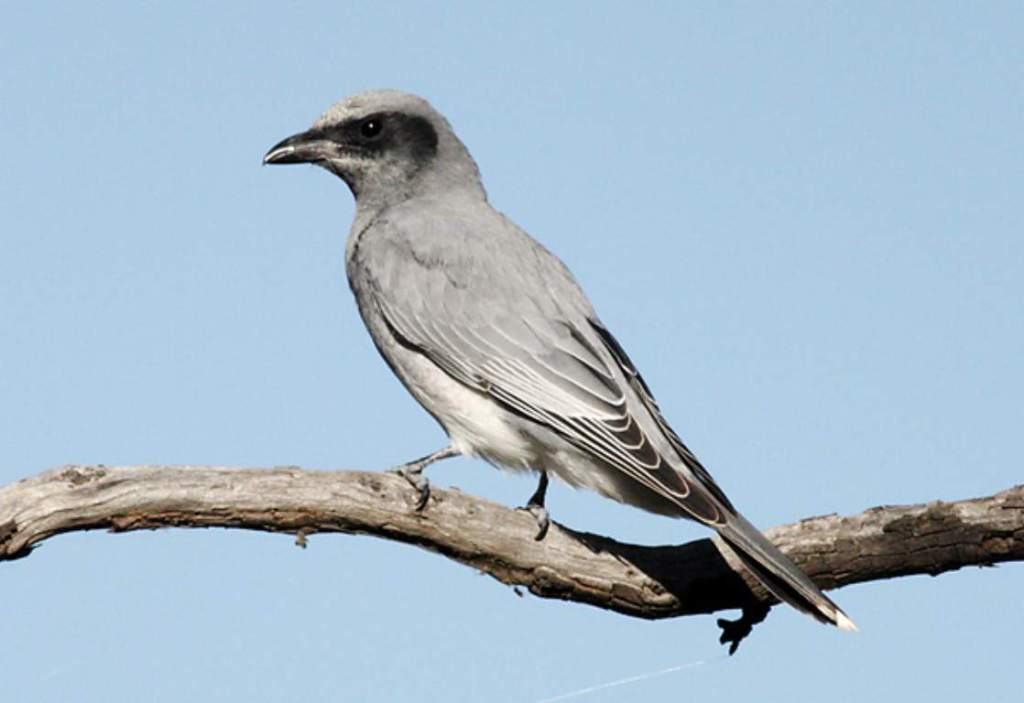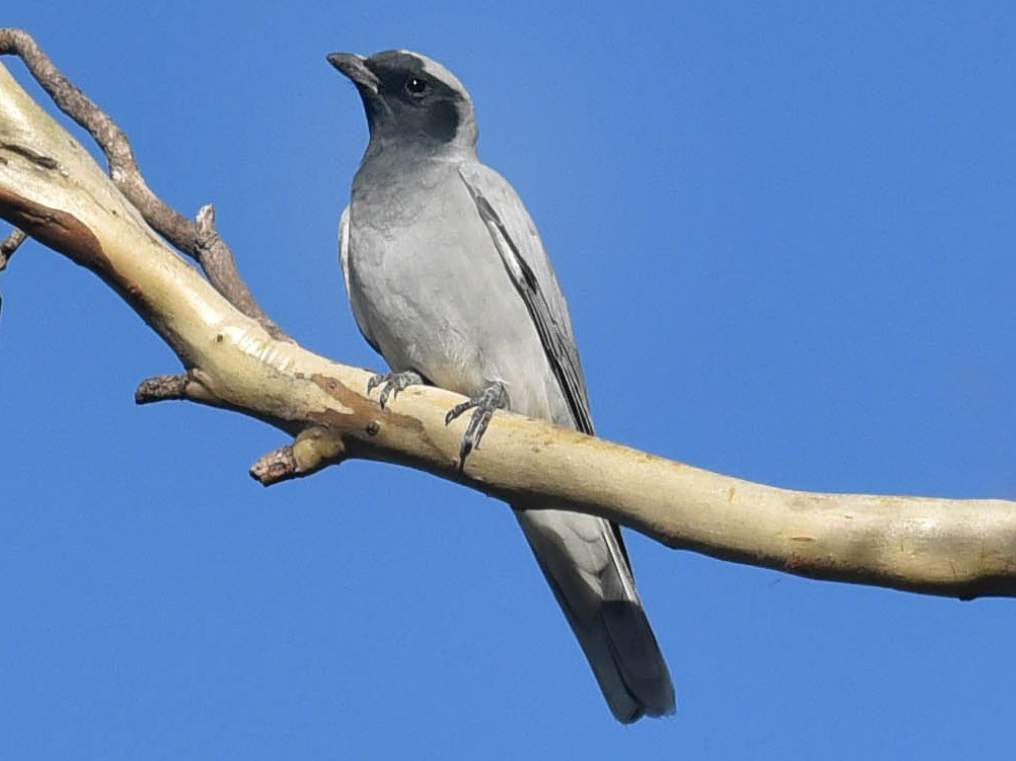Family: Black-faced cuckooshrike (Coracina novaehollandiae) belongs to the family Campephagidae in the order Passeriformes.
Habitat: Cuckoo shrikes so named because of their cuckoo-like form and flight and shrike-like bills are distinctive, medium-sized songbirds that paradoxically hardly sing. Most of their notes are metallic grinds, churrs, and hisses. Even their most animated territorial singer, the White-winged Trillerdoes little else than chatter loudly.
Just as characteristic are their meager cobweb-bound nests and dense and usually grey plumage which, sleek on the outside, is matted and downy inside and furnished with powder downs along the sides of the body and under the wings. Woodswallows are the only other songbirds with such downs. Feathering on the rump is the densest of all and can be spiny and may be raised in a hump in display and defense by brooding birds.
The Black-faced Cuckooshrike is the most widespread cuckoo-shrike. In Australia, it frequents all open forests and woodlands and is partly nomadic, and partly migratory. After breeding in late summer and autumn, pairs, and family parties often group in loose flocks of half a dozen to a hundred or more and roam widely.
Each spring, flocks disperse and adults return to their breeding territory year after year, probably re-mating with the same partner. In display, they flutter-fly in circles among their territory’s trees, uttering long sequences of grinding metallic trills. Male and female share nest-building, seeking positions on open horizontal forks, usually near the end of a branch and always shaded from above. Many forks are tested for suitability, the birds squatting in one, then another, simulating a brooding position, until one is finally chosen.

Movements: Movements are generally northerly. Most not all birds leave Tasmania and the southern tablelands of southeastern Australia in winter hence one of their names, Summerbird- and large numbers appear on Cape York Peninsula and across southern New Guinea. Many are juveniles.
Diet: Like most cuckooshrikes, the Black-faced cuckooshrike is tree-living bird and forage on a variety of large insects and occasional fruits and perhaps even nestlings of other birds taken from branches and foliage. Black-faced Cuckoo-shrikes’ diet includes insects, larvae, caterpillars, or other invertebrates.
Flight: Their flight is long graceful undulations and when landing they refold their wings several times. Weak in foot but strong in wings, they capture prey not by clambering about but by pounce-diving onto it from an open vantage perch. Their technique is to fly from tree to tree, pausing briefly to observe before moving on. In this way, they cover large areas, and few breeding territories are less than five hectares. Occasionally, birds drop to the ground for food and hover over it.
Identification: Both sexes are alike. The upper parts are light grey; the flight feathers are dark, the inner feathers becoming increasingly grey. The tail is darker, the outer feathers are black, and the tips are broadly white. The forehead, face, and throat are black. The breast is light grey; grading to white on the belly and undertail. Eyes are dark brown. The bill and feet are black. The immature bird is face grey with a broad black line from the bill through the eye; breast faintly barred grey-and-white; outer flight feathers edged narrowly white in juveniles. Downy young are flecked with darker and lighter greys.

Vocalizations: When both sexes are in contact with each other, the Black-faced Cuckoo-shrike calls out metallic churning. Additionally, there is a high-pitched metallic trilling career-career-career in display and excitement; harsh scolding skair.
Nest & Breed: Nesting and breeding occur in August-February. Nest: a small, shallow saucer of small sticks and bark, heavily covered in cobwebs; usually near the end of the branch 8-20 m or more above ground.
Eggs & Incubations: The bird lays 2 to 3 eggs green to olive in color, almost plain, or softly blotched with brown and grey; oblong-oval, about 34 x 24mm. Young fledge in about 25 days. Both sexes incubate and feed their young, and they defend them by diving steeply and clapping their bills at intruders. In windy conditions, many nestlings are blown out of the nest because it is so small.
Distribution: Woodlands and open forests throughout Australia. Nomadic and partial migrant to southern New Guinea, Bismarck Archipelago, and Solomons; accidental in New Zealand. Also through the Indonesian archipelagos to southeastern China and India.
Races: There are 19 races; three in Australia: one silver-grey in the Pilbara; one short-billed in Tasmania; and the other everywhere else.
Other Name: It is also known as Blue Jay, Shufflewing, and Summerbird.
Size: A Black-faced Cuckoo Shrike is about 320-340 mm long.
Read More – Yellow-eyed Cuckooshrike (Coracina lineata)







